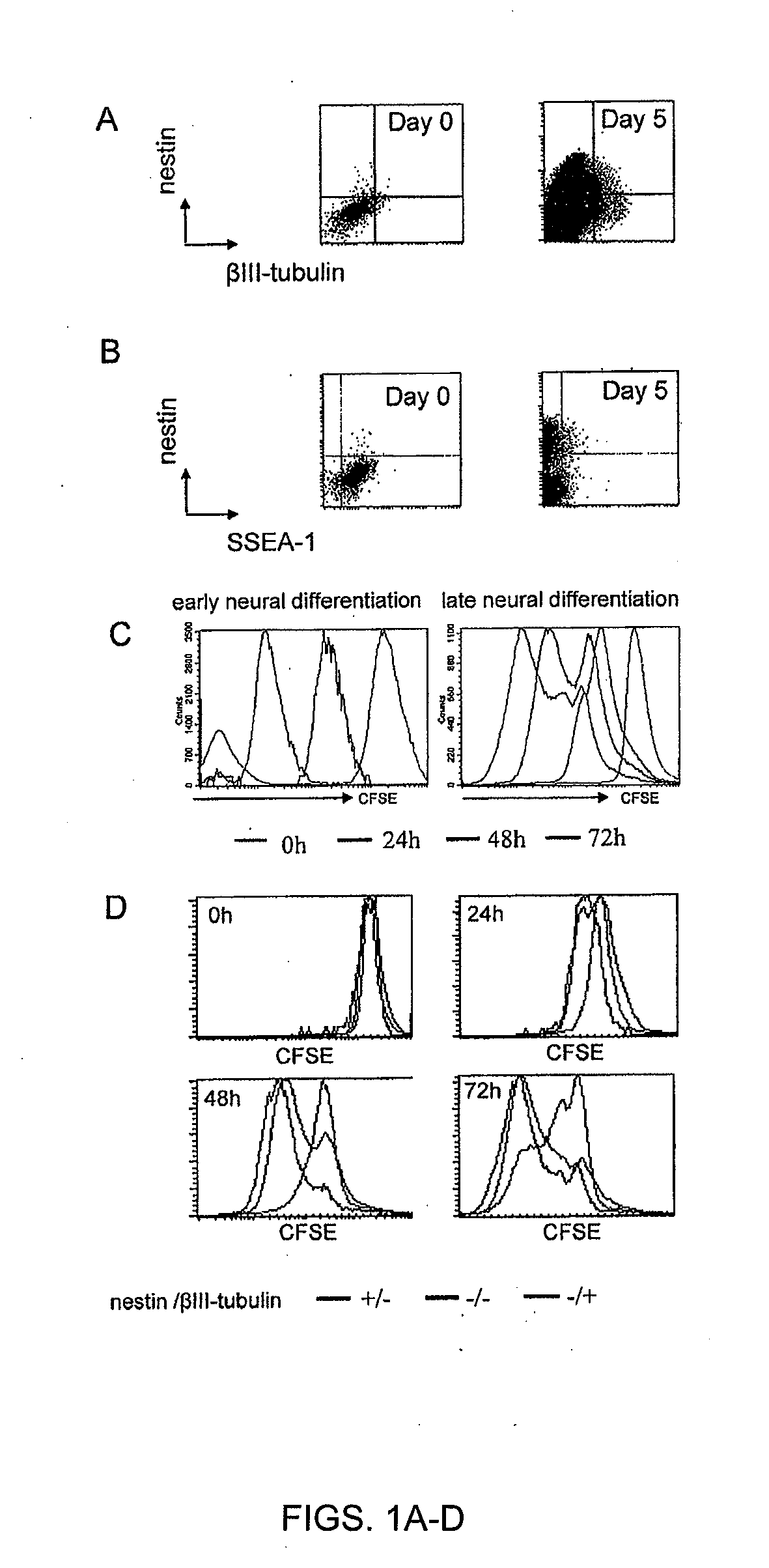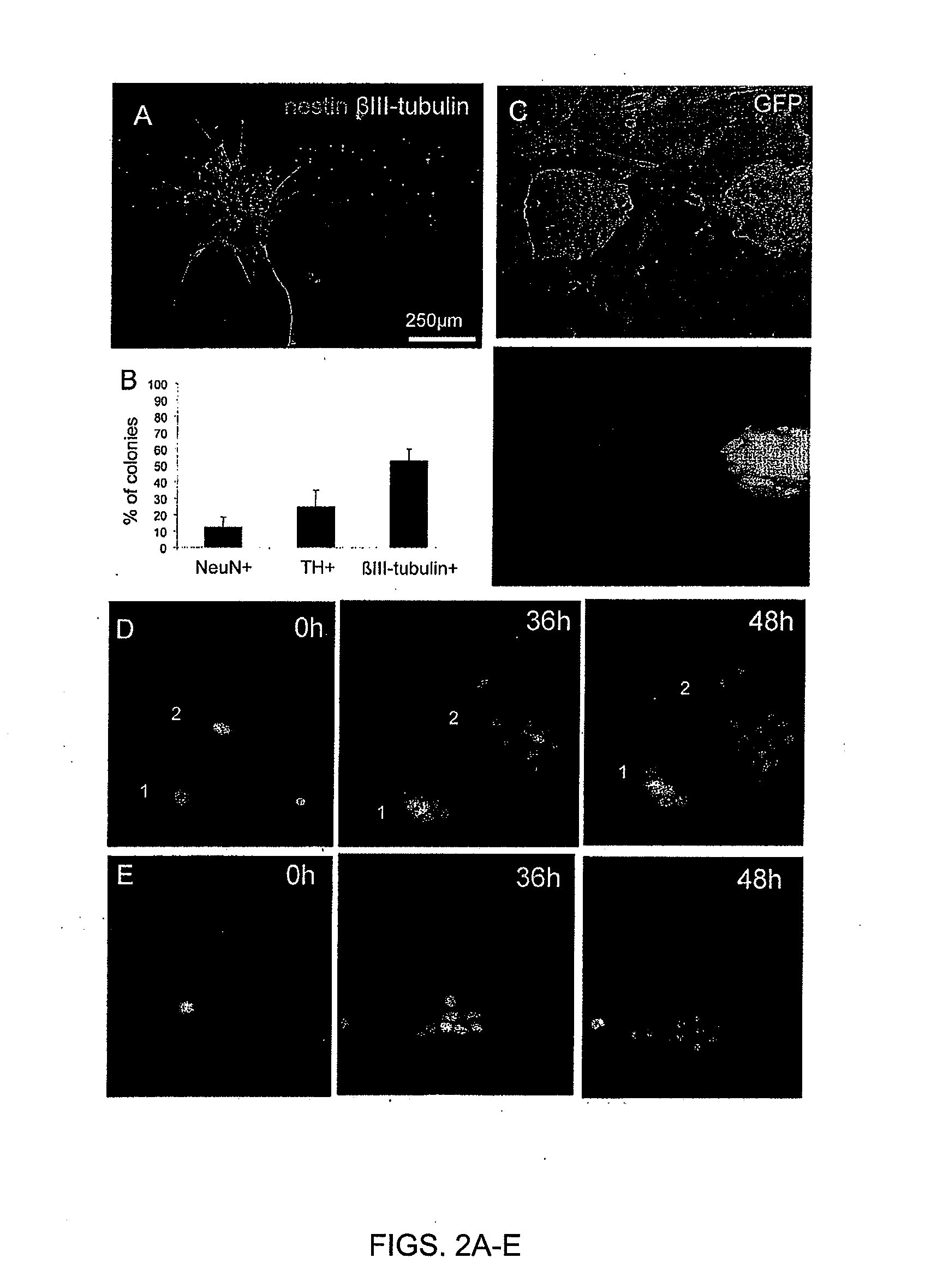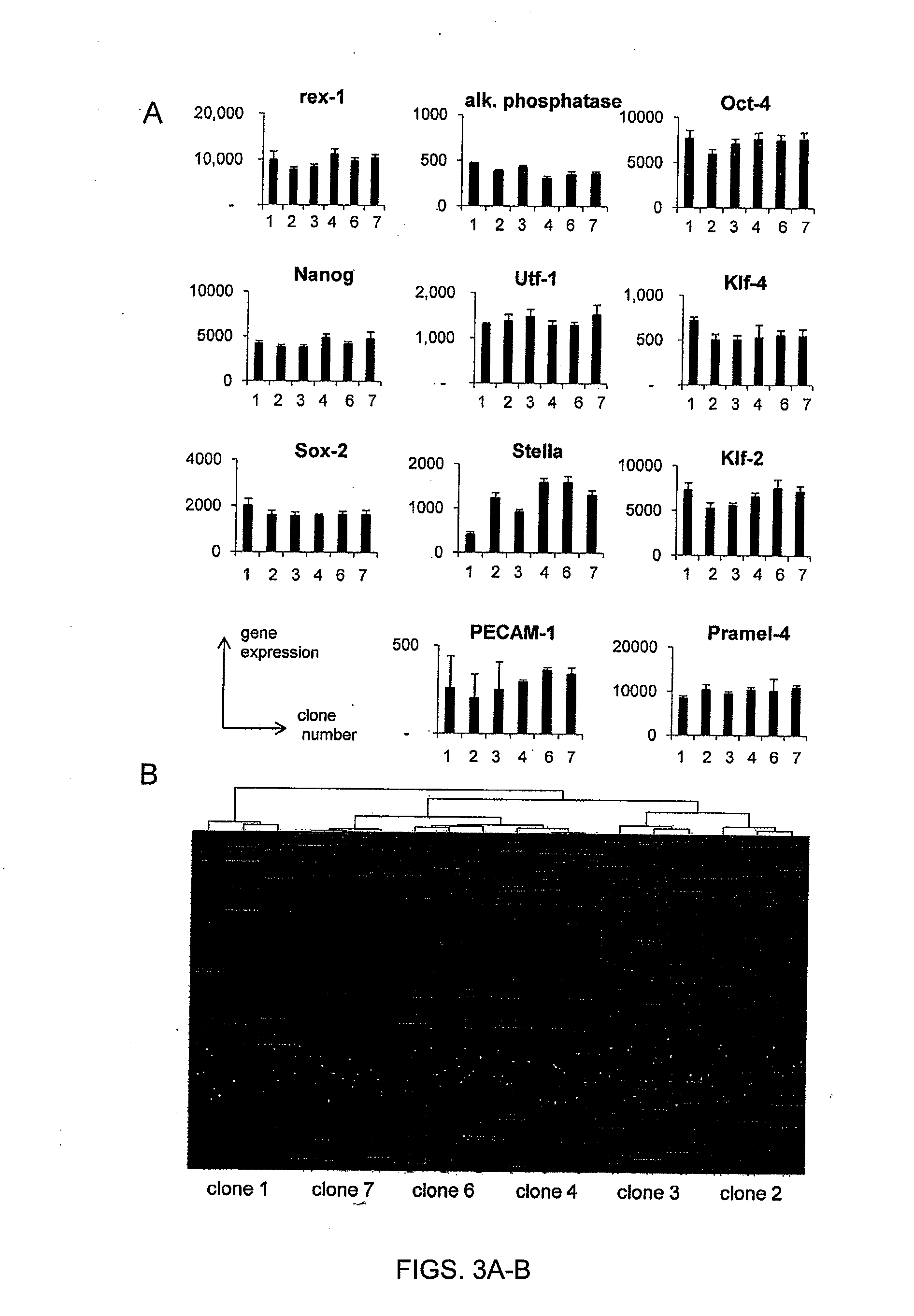Selection of stem cell clones with defined differentiation capabilities
a technology of stem cell clones and differentiation capabilities, applied in the field of stem cell differentiation, stem cell selection, cell therapy, can solve the problems of challenging targeted differentiation of specific lines of skeletal/connective tissue cells, and achieve the effect of reducing the risk of adverse effects in a subj
- Summary
- Abstract
- Description
- Claims
- Application Information
AI Technical Summary
Benefits of technology
Problems solved by technology
Method used
Image
Examples
example 1
Materials and Methods
[0272]Cell culture: The mouse CGR8 ESC line was obtained from the European Collection of Cell Culture (ATCC); the stromal PA6 cell line was provided by the Riken BRC cell bank, Japan. The CGR8 embryonic stem cell lines were maintained in BHK-21 medium supplemented with 10% fetal calf serum, 2 mM L-glutamine, 1% non-essential amino acids, 1 mM sodium pyruvate, 1% penicillin / treptomycin (Gibco, Invitrogen, Grand Island, N.Y., USA; www.invitrogen.com), and leukemia inhibitory factor. CGR8 were cultured on gelatin-coated dishes. PA6 stromal cell line was maintained in MEM-alpha medium supplemented with 10% fetal bovine serum (Gibco, Invitrogen).
[0273]Antibodies: The following primary antibodies were used: mouse anti-nestin, mouse anti-neuronal nuclei-specific protein (NeuN), rabbit anti-tyrosine hydroxylase, rat anti-dopamine transporter (DAT) (Chemicon, Temecula, Calif., USA; www.chemicon.com), mouse anti-tyrosine hydroxylase (Santa Cruz Biotechnology Inc., Santa C...
example 2
Cellular Diversity within Embryonic Stem Cells: Pluripotent Clonal Sublines Show Distinct Differentiation Potential
[0282]Embryonic stem cells (ESCs), derived from the early inner cell mass (ICM), are constituted of theoretically homogeneous pluripotent cells. This study was designed to test this concept, using experimental conditions that allowed characterization of progenies derived from one parental ESC. Flow cytometry and live imaging analyses demonstrated that some individual ESC submitted to neural differentiation generate progenies that escape early to the desired phenotype. It was not due to a delayed differentiation program but to significant variations in the capacity of individual parental ESC to generate neurons, thus raising the possibility of a clonal diversity among ESC. To further substantiate this hypothesis, clonal sublines from mouse ESC were generated by a limit dilution method. Transcriptome analysis of these clonal lines showed marked differences in gene express...
PUM
| Property | Measurement | Unit |
|---|---|---|
| Fraction | aaaaa | aaaaa |
| Fraction | aaaaa | aaaaa |
| Fraction | aaaaa | aaaaa |
Abstract
Description
Claims
Application Information
 Login to View More
Login to View More - R&D
- Intellectual Property
- Life Sciences
- Materials
- Tech Scout
- Unparalleled Data Quality
- Higher Quality Content
- 60% Fewer Hallucinations
Browse by: Latest US Patents, China's latest patents, Technical Efficacy Thesaurus, Application Domain, Technology Topic, Popular Technical Reports.
© 2025 PatSnap. All rights reserved.Legal|Privacy policy|Modern Slavery Act Transparency Statement|Sitemap|About US| Contact US: help@patsnap.com



